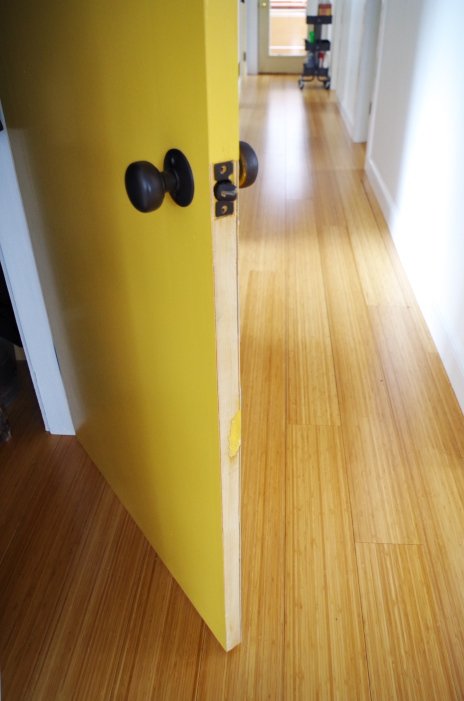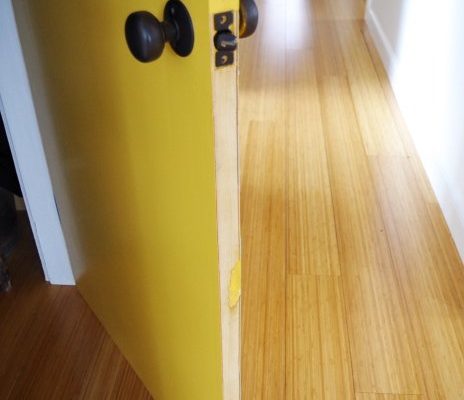
Imagine you’ve painted your front door a stunning color that stands out in the neighborhood. You love the new look, but then you face an issue: the door hardware doesn’t seem to work well with this unique finish. It’s frustrating, right? Understanding how to troubleshoot these issues is key to keeping your doors functional and fabulous.
In this article, we’ll dig into how to handle the quirks of door hardware when faced with non-standard paint finishes. We’ll explore what you need to know about the types of finishes, how to troubleshoot common problems, and tips for ensuring everything works harmoniously. Let’s get started!
Understanding Non-Standard Paint Finishes
Non-standard paint finishes can be anything from high-gloss to textured or even metallic. It’s essential to recognize what you’re dealing with before you start troubleshooting. Each finish can affect how the hardware interacts with the door.
For instance, high-gloss finishes are great for aesthetics, but they can be a challenge because they might make the door stick. On the other hand, textured finishes might prevent screws or mounting hardware from securing tightly. When you know the finish type, you can better anticipate potential issues with hardware.
Also, consider the application method. Did you use a spray-on finish, or did you roller it on? Each method can leave a different texture and thickness, which can impact hardware installation. If you aren’t sure about your finish, take a close look at your door and make a mental note of its texture.
Common Hardware Issues with Non-Standard Finishes
When it comes to doors with non-standard paint finishes, several common issues might pop up. Here are a few to watch for:
- Binding: This happens when the door swells due to humidity or the thickness of the paint, causing it to stick in the frame.
- Loose Hardware: Over time, the additional paint layers can inhibit screws from tightening properly, leading to wobbling knobs or hinges.
- Corrosion Risks: Some paint finishes can trap moisture, which may lead to rust or corrosion on metal parts.
Addressing these problems requires a bit of tinkering. For example, if the door sticks, you may need to shave off some of the finish around the edges to allow for smoother operation. Loose hardware might just need a quick tighten, but if it’s a recurring issue, you might have to go in deeper to secure it properly.
How to Troubleshoot Binding Issues
If you find that your door is binding, it can be annoying, but there’s a straightforward way to troubleshoot it. First, identify where the binding occurs. Is it at the top, bottom, or along one side?
Here’s a step-by-step guide:
1. Identify the Problem Area: Open and close the door slowly to see where it catches.
2. Inspect the Paint Thickness: Check if the paint has built up in that area. If so, that’s likely the culprit.
3. Sanding: Use fine-grit sandpaper to gently sand down the excess paint. Be careful not to damage the door itself.
4. Test the Door: After sanding, test the door again to see if it opens smoothly.
By following these steps, you can often resolve binding issues with minimal trouble.
Dealing with Loose Hardware
Loose hardware is another annoying issue that can stem from non-standard finishes. When the screws don’t hold well, it can lead to wobbly knobs or hinges. Here’s how you can tackle it:
1. Check for Loose Screws: Use a screwdriver to tighten any loose screws you see. Make sure to do this gently to avoid stripping them.
2. Use Longer Screws: If the hardware continues to loosen, consider using longer screws that can grip better into the wood or frame beneath the paint.
3. Add Washers: For knobs and handles, using washers can help distribute the load and prevent loosening over time.
Taking these measures can help secure your hardware effectively, ensuring it continues to function well.
Avoiding Corrosion on Metal Hardware
If the paint finish traps moisture, your metal hardware is at risk for corrosion. Here’s how to keep your hardware safe:
1. Select the Right Paint: Choose a paint that’s designed for door hardware—it can be more resistant to trapping moisture.
2. Regular Inspection: Periodically check your hardware for signs of rust or corrosion. Catching it early means you can clean or replace it before it becomes a larger issue.
3. Use a Sealant: Applying a sealant over the paint can create a barrier against moisture, minimizing corrosion risks.
By taking these steps, you can prolong the life of your door hardware and maintain both performance and aesthetics.
Considering Hardware Replacement
Sometimes, after all your troubleshooting, hardware replacement might be the best path forward. If it feels like a never-ending battle with loose screws, binding, or corrosion, it can be worthwhile to explore new options. Here’s what to keep in mind:
1. Choose Compatible Hardware: Make sure any new hardware is compatible with your specific finish and thickness. Some finishes are better suited for certain hardware types.
2. Universal Hardware Options: Consider universal door knobs or hinges. They often come with adjustable features, making them easier to install with various finishes.
3. Consult with Experts: If you’re unsure about the right kind of hardware to choose, don’t hesitate to consult with a hardware store professional. They can guide you to the best options for your unique needs.
Choosing the right hardware can save you time and frustration down the line.
Maintaining Your Door’s Finish
After troubleshooting and replacing hardware, keeping your door’s finish in top shape is vital. Here are some maintenance tips:
1. Regular Cleaning: Use a gentle cleaner to wipe down your door and remove any dirt or grime. Avoid harsh chemicals that could damage the paint.
2. Touch-Up Paint: Keep some of your paint handy for touch-ups on scratches or chips, which can help prevent moisture from getting under the finish.
3. Inspect Regularly: Periodically assess the door and hardware for any signs of wear and tear. Early detection of issues can save you more significant headaches later.
By maintaining your door’s finish regularly, you can enhance both the appearance and longevity of your hardware.
Final Thoughts on Troubleshooting Hardware with Non-Standard Finishes
Troubleshooting hardware on doors with non-standard paint finishes doesn’t have to be a daunting task. By understanding your finish type and being aware of common issues, you can take proactive steps to resolve problems as they arise. Remember to keep an eye on binding, loose hardware, and corrosion, and don’t hesitate to replace hardware if needed.
With a little bit of diligence and regular maintenance, you can keep both your doors and their hardware looking great and functioning smoothly. After all, a beautifully painted door deserves hardware that works just as well!
